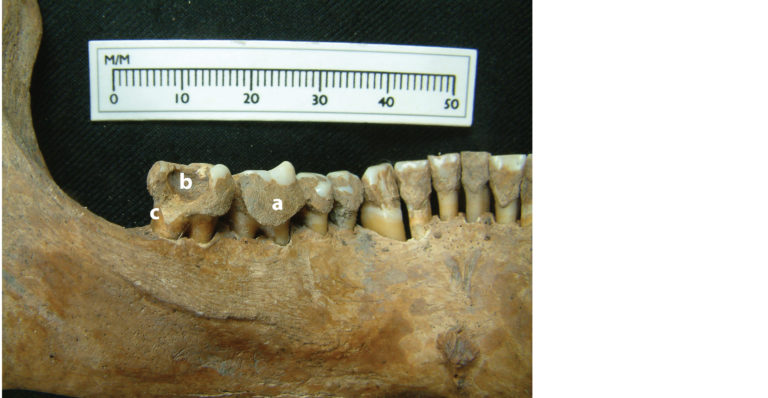Home / History / Archaeology / Archaeology and the Battle of Dunbar 1650: From the Scottish Battlefield to the New World / Looking at dental tartar
This article is from the free online
Archaeology and the Battle of Dunbar 1650: From the Scottish Battlefield to the New World


Reach your personal and professional goals
Unlock access to hundreds of expert online courses and degrees from top universities and educators to gain accredited qualifications and professional CV-building certificates.
Join over 18 million learners to launch, switch or build upon your career, all at your own pace, across a wide range of topic areas.

 Heavy deposits of calculus or mineralised dental plaque (a) on the lower left teeth of Skeleton 22 suggesting any oral hygiene practiced was ineffective. His second molar tooth had a large cavity (b) with an associated fracture (c) © Anwen Caffell, Durham University
Heavy deposits of calculus or mineralised dental plaque (a) on the lower left teeth of Skeleton 22 suggesting any oral hygiene practiced was ineffective. His second molar tooth had a large cavity (b) with an associated fracture (c) © Anwen Caffell, Durham University
 Lisa Mackenzie analysing microscopic particles (top left); heavily boiled plant epidermis (top right); damaged starch granules, Triticeae tribe (bottom left); traces of microcharcoal or soot in dental calculus (bottom right) © Lisa Mackenzie, The University of York
Lisa Mackenzie analysing microscopic particles (top left); heavily boiled plant epidermis (top right); damaged starch granules, Triticeae tribe (bottom left); traces of microcharcoal or soot in dental calculus (bottom right) © Lisa Mackenzie, The University of York






